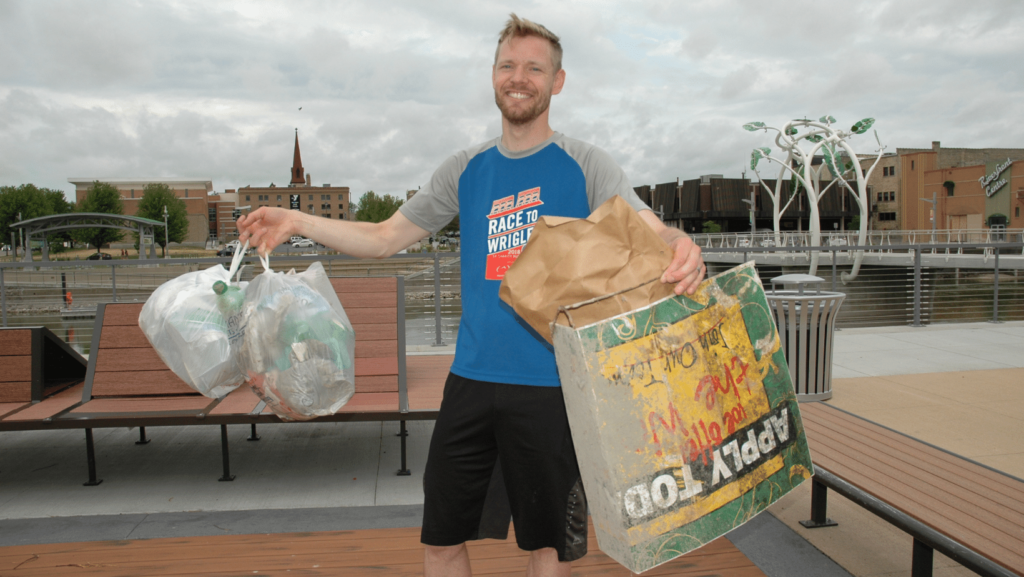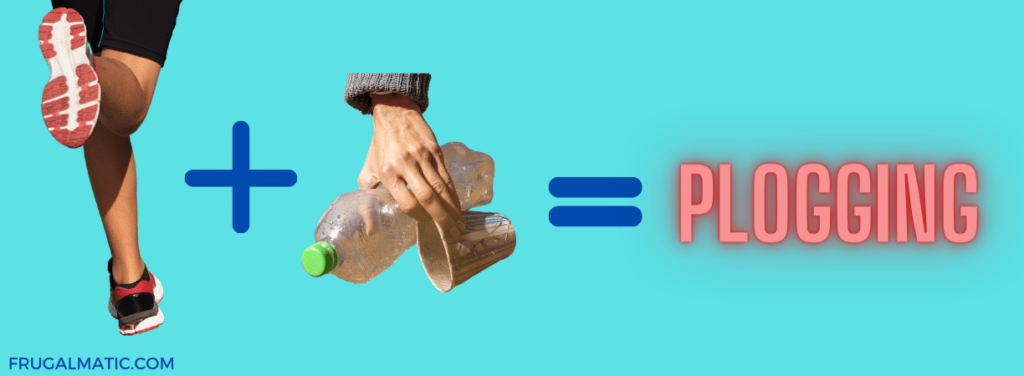This post was last updated on August 11th, 2022 at 11:21 am
If you’re the kind of person who doesn’t enjoy running for the sake of running, let me introduce you to plogging. I tried it for the first time recently, and I wish I had thought of it sooner.
Plogging is simple: Pick up trash while you run or walk. I bet you’ve “plogged” before without even realizing it. The only difference is it now has a name. Plogging is the merger of “jogging” and the Swedish phrase for “pick up”—plocka up. Wikipedia credits Erik Ahlström with coining the phrase around 2016. He started it in the Swedish capital, Stockholm.
Plogging gives jogging a practical purpose. Some people might argue jogging doesn’t need a practical purpose, but for people like me, it’s important for movement to accomplish something tangible. In fact, I’m so adamant about this issue that, at least on this website, I refer to any physical activity that doesn’t accomplish something tangible an “offset.” To be clear, there’s nothing wrong with performing offsets. If you love to run just to run, all the power to you, and I’m jealous! However, running in itself isn’t rewarding enough for some of us. Plogging adds an element of accomplishment that I think could motivate some people to run or walk more often.
My introduction to plogging
I hadn’t heard of plogging until I spotted an article about it in a newspaper. It mentioned a local resident, Joshua, had created a Facebook group focused on plogging. I wanted to meet Joshua and get a proper introduction to this activity. I also wanted to learn about his inspiration for starting the plogging group. We met in the downtown area of our community.
“I have a heart for downtown. I live down here. I work down here, and I really care about the spot being beautiful. But I’m also a marathon runner as well. And so it puts those two things together,” he said.
When I told Joshua I’d be out of my league running with him, he reassured me. “The good thing about plogging is you don’t have to be a marathon runner to do it,” he said. “You can be walking with a dog and a stroller and just pick up the trash you see on your way. It really doesn’t require any speed or skill to do.”
Indeed, many people have told him they’ve been plogging all of their lives. “But now there’s some language around it, and we can kind of come together as a community now,” he said.

Plogging offers multiple benefits
Littering is one of those things that we all learn at an early age not to do. Yet, the problem never goes away. And no amount of trash receptacles along a street seems to completely rid an area of litter. However, from what I’ve observed about clean areas, maintaining a clean appearance tends to discourage would-be litterers. If an area is riddled with litter, it sends a message that it’s OK to add to the mess. Picking up litter is an easy and cost-effective way to enhance the appearance of a commercial center or neighborhood.
From a frugalmatic standpoint, plogging offers both direct and indirect benefits, the primary benefit being the effect of picking up litter. Improving the appearance of a neighborhood or commercial center creates value. People tend to want to invest in valued areas, and so picking up litter indirectly promotes new investment.
The health benefits quickly became apparent during my brief plogging adventure. Plogging arguably offers a better workout than “regular” jogging because of the varied movements—sudden stops and bending down. You don’t run in straight line but often zig and zag to and from different pieces of litter. I used not only my leg muscles but multiple muscles in my torso region.
You never know what you might find
Joshua kept an easy pace during my inaugural plogging adventure, and I was thankful. By the end of our 1-mile jaunt, I was amazed to see that we had collected about 5 grocery-sized bags worth of litter. We grabbed everything from a flip-flop to shoe string.
Running a mile, in itself, would have done little for me. But running a mile to collect all that trash created a sense of satisfaction that you can’t get from exercise alone. Exercising is about self-improvement, while plogging is also about contributing to a “greater good.”
Joshua is right about how plogging can bring a community together. It can turn what some people might consider a gross chore (collecting litter) into a healthy, communal experience. So if you’re looking for a way to make more out of a running routine—or walking routine—take a bag with you and pick up some trash.
Also, don’t forget to wear sturdy, waterproof gloves. You never know what you might find.

